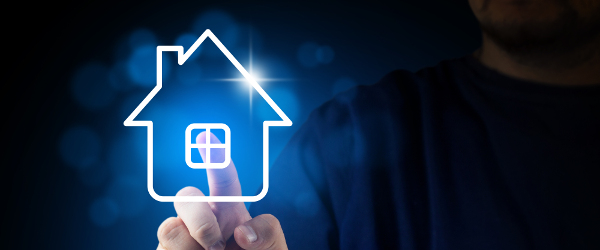
The smart home certainly isn’t a new concept – as long ago as 1950, General Electric (GE) unveiled its vision of the 21st century home, involving a kitchen complete with pop-up fridge, ice dispenser, plastic plate maker, and ultrasonic dishwasher.
But now technology has truly caught up with the vision, and the number of households with some form of smart home system,such as connected entertainment, energy, appliance, security or healthcare systems, are predicted to surpass 100 million worldwide by the end of 2015 and nearly triple in the next ten years’ time to over 300 million.
Against this volume, it’s not hard to believe Gartner when it claims that by 2019 companies will ship 1.9 billion connected home devices, generating about €446.6 billion in revenue.
However, significant market barriers need to be overcome before the connected home market can really blossom:
1. Build brand trust:
Especially important for new brands entering this competitive space, but also for established brands offering a new product or service skillset, trust is key. Connecting into the ‘nerve center’ of people’s home lives through their internet routers ¬- and all this entails in terms of security, occupancy and lifestyle information – requires the highest degree of trust and data protection.
Enterprises would do well to consider a dedicated brand for their connected home offer to firstly build this trust and secondly better position their offering to consumers.
2. Create a compelling use case:
With so many opportunities for innovation, it’s essential that businesses pay a high amount of attention to developing a compelling customer proposition. This must meet a clear consumer need, or solve a common ‘pain point’. This can be achieved by close collaboration with early adopters to refine and develop the strategy.
3. Create a platform to support the smart home:
Choosing or developing a platform is one of the greatest challenges that the connected home market faces. Initial fragmentation means there are many established options already on the market, and it’s simply not feasible for smaller companies to make any headway in this market without joining an existing platform. However, choosing a standards-based platform that can scale with ease, provide the tools to build innovative services that customers value and intuitively recognise from their experiences with established computing and TV platforms is a weighty decision.

Then the ever-present question to answer – whether to go with a general-purpose and proprietary platform or one built on open source principles, such as Eclipse SmartHome, a flexible framework for the smart home. It’s worth remembering while making this decision that attracting developers is always a major stumbling block for an ecosystem, and open platforms tend to bring larger developer communities to the table. This often means that creating new services can be done more cost-effectively and more flexibly than in closed environments.
4. Work with the big beasts:
Of course, it’s worth pointing out that the platform debate isn’t about not working with devices supported by Apple and Google – quite the contrary. The only way to integrate with, and future-proof against, the many incompatible devices and standards springing up in this market is to be part of a collaborative, open ecosystem. A neutral ‘language’ greatly cuts the chances of disappearing into a proprietary dead end and provides customers with the reassurance that they are buying into a platform of choice.
5. Work with the big data too:
One thing is absolutely certain about the connected home – there’s going to be a lot of data generated! This data will in many cases highlight entirely new consumer needs and behaviours, creating opportunities for businesses and for consumers alike, but the major concerns about security and privacy must also be answered. Simply dealing securely with the volume of new data will require robust systems and best-practice architectures to cope – partnering with best-of-breed specialists in data management is highly recommended.
Of course, for such a complex and rapidly evolving area as IoT in the home these issues are only a starting point, the tip of a digital iceberg that is likely to change the way we live quite radically, arguably more fundamentally than any other technology to date. The home is the backdrop to our earliest memories, where we in turn nurture our children, and where we seek to relax, to unwind, to switch off and to enjoy the company of loved ones, family and friends.
The changes that connectivity is bringing to the home will need managing carefully to support the market.
Thomas Rockmann is Vice President – Connected Home at Deutsche Telekom


